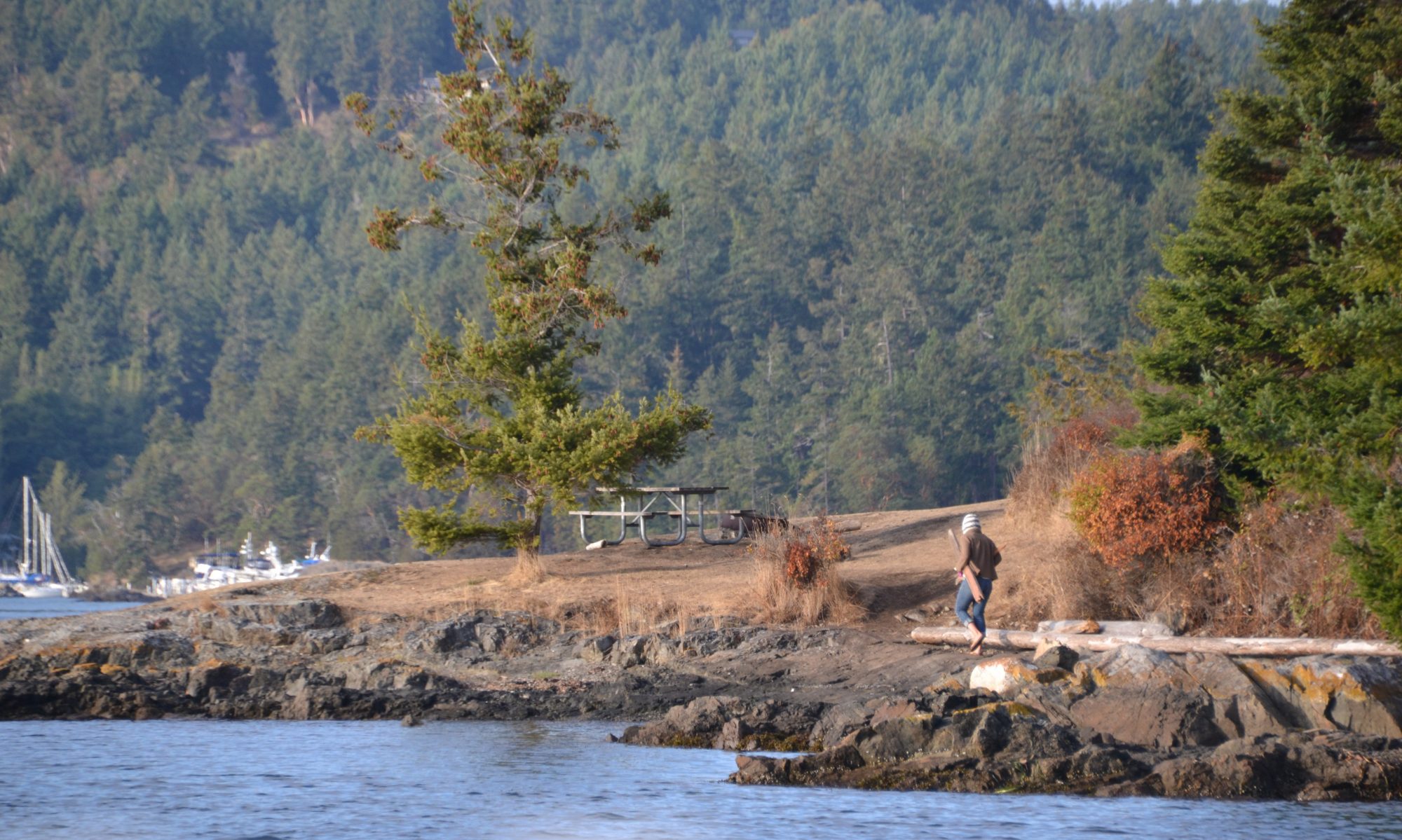I came across this idea from a friend of mine. I got the book and have been reading through it. It’s a fascinating idea where the flue/chimney of the stove goes down, then out the side, rather than up away from the fire. It’s taken me about forty pages of the book to wrap my head around this idea – but I think a picture is worth a thousand words.
So here you can see the wood there on the left. The fresh air is sucked down by the wood/fire, through the fire tunnel on the right, up the heat riser, back down the outside of the heat riser then out the flue. The most important part here that isn’t pictured is what’s creating the suction for the air to follow this path! What happens to the right of the picture is that the flue extends through something interesting like a big cobb bench or bed, or clay furniture. The furniture acts as a heatsink taking up heat from the flu gasses. There is a long straight run out of the house and up the chimney. The heat rising out of the chimney like that creates a low pressure in the flue system and continues to suck up more fresh air by the fire.
There are two heat ideas at work here. First off, the heat riser. You can see the heat riser in the picture, the fat vertical tube. The walls of that tube are covered in insulation. The whole riser is then covered by a metal 55 gallon barrel. Thin metal barrels like that are awesome at conducting heat (horrible insulators) and will get nice and hot. This type of heat is different from the radiant heat we’re used to at an outdoor campfire. When you’re sitting in front of a campfire your feet or front side of your jeans are usually almost on fire, while your backside is freezing. This heat is radiant heat transferred by the light of the fire. Wiki on mechanisms of heat transfer. When you stick a barrel over all that heat, you don’t get the radiant heat as the barrel heats up. You don’t lose the radiant heat, it’s just transferred to a different type of heat.
The barrel itself isn’t enough to take up all the heat either, so you can run those flue gasses through the cob furniture or something before you expel it from the smoke stack of the house. The goal here is to have hot combustion at the fire area, and cool gasses coming out of the final stage of your stove (including all the ducting etc.).
This project is currently a twinkle in my minds eye. The book is really great. It appears to be self published by some folks in nearby Oakland and is for sale for $18 from their website, http://www.rocketstoves.com/

